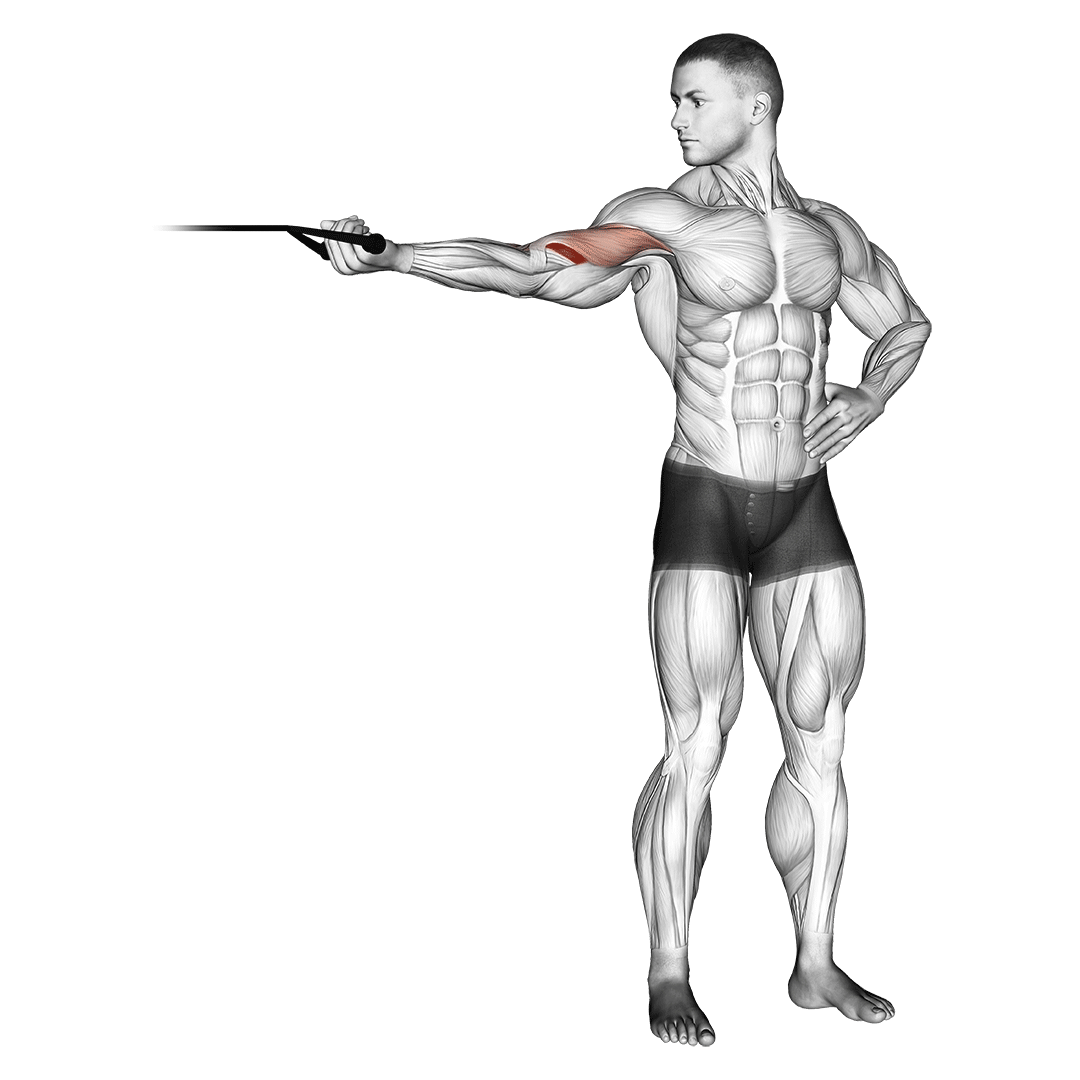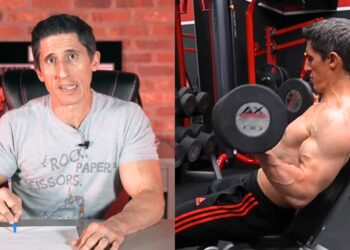The Band One Arm Overhead Biceps Curl is an effective exercise designed to enhance bicep strength and aesthetics. Using a resistance band, this movement isolates the biceps, allowing for controlled and progressive training. It serves as an excellent addition to any arm workout, whether your goal is muscle growth or definition.
This curl primarily targets the biceps brachii, essential for elbow flexion. The overhead position maximizes the muscle’s stretch, promoting strength and endurance while ensuring a full range of motion for optimal muscle growth. To incorporate this exercise, aim to perform it 2-3 times weekly, allowing rest days for recovery. Selecting an appropriate resistance level is crucial; the band should challenge you towards the last repetitions while maintaining proper form. Using a mirror can help you monitor your movement and ensure that concentration remains on your forearm.
Safety is important when using resistance bands. Securely anchor the band under your foot, keep a slight bend in your elbow, and stop if you feel sharp pain. This accessible exercise suits various fitness levels; adjust the band’s resistance for your ability or modify it to a seated position if needed. Consistency, coupled with a balanced regimen, is key to achieving significant bicep gains.
How to Do a Band One Arm Overhead Biceps Curl

Begin by standing with your feet shoulder-width apart, holding one end of a resistance band with your right hand. Secure the other end of the band under your left foot to anchor it.
Level Up Your Fitness: Join our 💪 strong community in Fitness Volt Newsletter. Get daily inspiration, expert-backed workouts, nutrition tips, the latest in strength sports, and the support you need to reach your goals. Subscribe for free!
Level Up Your Fitness: Join our 💪 strong community in Fitness Volt Newsletter. Get daily inspiration, expert-backed workouts, nutrition tips, the latest in strength sports, and the support you need to reach your goals. Subscribe for free!
- Lift your right arm overhead, keeping a slight bend in your elbow, and maintain tension in the band.
- Slowly lower your forearm behind your head, allowing your elbow to bend while keeping your upper arm stationary.
- Pause briefly when your forearm is just above the back of your neck.
- Extend your arm back to the starting position, fully contracting your biceps at the top.
Exhale as you curl the band back up, and inhale as you lower it down for proper breathing throughout the exercise.
Common Mistakes
- Using Too Much Resistance: Many individuals choose a band that is too tight, which can hinder proper form. To avoid this, select a resistance level that allows you to maintain control throughout the movement, especially during the lowering phase.
- Neglecting Elbow Position: Failing to keep the upper arm stationary can lead to improper targeting of the biceps. Ensure your upper arm remains close to your head by focusing on keeping your elbow in place throughout the exercise.
- Inconsistent Breathing: Many trainees forget to breathe correctly, either holding their breath or breathing too rapidly. Focus on exhaling as you curl the band up and inhaling as you lower it down, creating a rhythm that supports your strength training.
- Rushing Through Repetitions: Performing the exercise too quickly can lead to poor muscle engagement and increase the risk of injury. Slow down your tempo to enhance muscle contraction and ensure proper form throughout each repetition.
- Not Engaging Core Muscles: Failing to stabilize the core can lead to unwanted body movement and reduce the effectiveness of the exercise. Engage your core throughout the movement to maintain stability and focus on your biceps.
Benefits
- Enhances Bicep Activation: This exercise isolates the bicep muscle, maximizing muscle fiber engagement for optimal growth.
- Improves Shoulder Stability: The overhead position promotes stable shoulder mechanics, reducing injury risk while strengthening stabilizing muscles.
- Increases Flexibility: The movement pattern allows a better stretch of the biceps and shoulder muscles, contributing to improved flexibility over time.
- Low Impact: Using a resistance band reduces joint strain, making it safer for individuals with past injuries or those new to strength training.
- Versatile and Convenient: Bands are lightweight and portable, allowing you to perform this exercise virtually anywhere, promoting consistency in your training routine.
Exercise Variations
Alternative Exercises
Safety Precautions
When performing the Band One Arm Overhead Biceps Curl, it is essential to maintain proper form to minimize the risk of injury. Start with a lighter resistance band to ensure you can complete the movement with good technique. Gradually increase resistance as your strength improves. Always pay attention to your body’s signals; if you feel any discomfort or pain beyond typical muscle fatigue, stop the exercise immediately.
Ensure that your standing surface is stable and free of obstacles to prevent losing balance during the exercise. Keep your core engaged throughout the movement to support your spine and prevent any strain on your lower back. Avoid overarching your back or using momentum to lift; the curl should be performed in a controlled manner to focus on bicep engagement and reduce the risk of strain on your shoulders or elbows.
Additionally, inspect your resistance band before each use for any signs of wear and tear. A damaged band can snap during exercise, leading to injury. Always secure the band properly under your foot to prevent it from slipping and ensure you have enough grip to maintain control during the entire range of motion.








